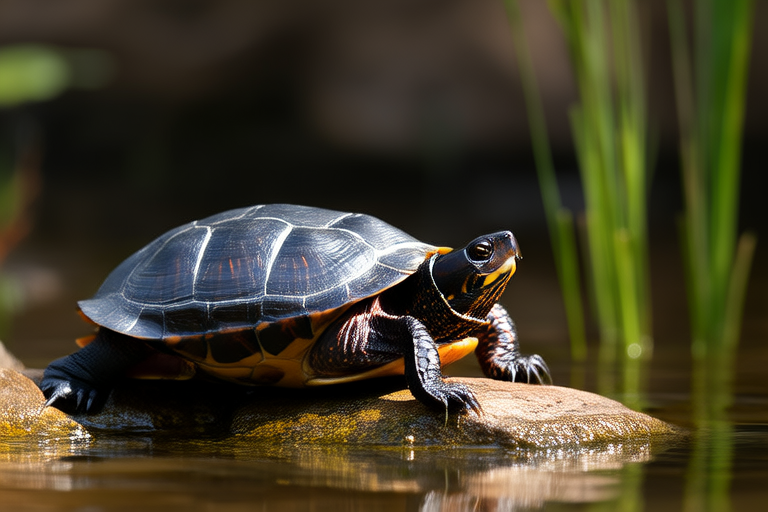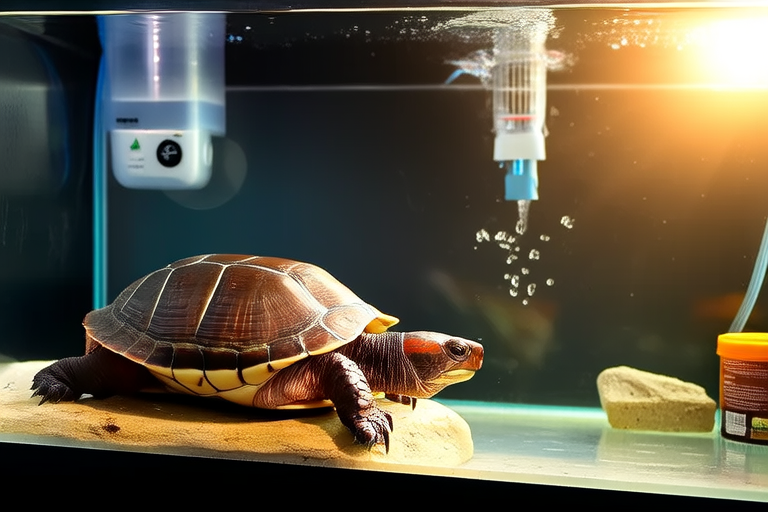
Red-Eared Slider Care Guide: Expert Tips for First-Time Turtle Owners
Welcome to your comprehensive guide on caring for Red-Eared Sliders (RES), one of the most popular pet turtles. This guide will cover everything from setting up their habitat to understanding their dietary needs and social behaviors. Whether you’re a first-time turtle owner or looking to refine your care practices, this guide will provide you with all the information you need.
Habitat Setup
Tank Size
Proper tank size is crucial for your Red-Eared Slider’s well-being. A general rule is to provide at least 10 gallons of water per inch of shell length for juvenile turtles. As they grow, increase the tank size accordingly; adults may require tanks that hold 80-120 gallons or more. Ensure there’s enough space for swimming and basking areas.
Water Quality Maintenance
Maintaining clean water is vital for your turtle’s health. Use a high-quality filtration system designed for large aquariums or ponds. Regularly check ammonia and nitrite levels, and perform partial water changes weekly. Equip your tank with a dechlorinator to remove harmful chemicals from tap water.
UV Lighting
UVB light is essential for calcium metabolism and vitamin D3 synthesis. Choose a UVB bulb specifically made for reptiles and place it within 12-18 inches above the basking area. Replace bulbs every six months to ensure effectiveness. Ensure your turtle can bask under the light for several hours daily.
Temperature Requirements
Water temperatures should range between 75-80°F (24-27°C) while basking areas should be warmer at around 90-95°F (32-35°C). Use submersible heaters to maintain water temperatures and thermometers to monitor both water and air temperatures accurately.
Diet Specifics
Feeding Schedules
Feed juveniles daily while adults can eat every other day. Offer a balanced diet rich in protein, vitamins, and minerals. Pellets formulated for aquatic turtles make a good base, supplemented with fresh vegetables like leafy greens and occasional treats such as earthworms or wax worms.
Nutritional Needs
Ensure your turtle receives adequate amounts of calcium and vitamin D3. Calcium supplements can be sprinkled over food occasionally. Avoid overfeeding, which can lead to obesity and other health issues. Monitor your turtle’s weight and adjust portions as needed.
Health Concerns, Common Diseases, and Preventive Measures
Common health issues include respiratory infections, shell rot, and parasites. Signs of illness include lethargy, loss of appetite, swollen eyes, or irregular swimming patterns. Regular vet check-ups are recommended to catch any potential problems early.
To prevent diseases, maintain optimal water quality, provide proper nutrition, and avoid overcrowding. Quarantine new turtles before introducing them into your existing tank to minimize the risk of spreading infections.
Handling and Social Behavior
Handle your turtle gently and infrequently to avoid stress. Wash hands thoroughly after handling to prevent the spread of salmonella. Red-Eared Sliders are generally solitary creatures but can tolerate the presence of others if given ample space.
Creating an Enriching Environment
Incorporate various substrates like smooth river rocks or sand to stimulate natural behaviors. Provide hiding spots and floating platforms for resting. Rotate toys periodically to keep your turtle engaged and mentally stimulated.
Ensuring Longevity
With proper care, Red-Eared Sliders can live 20-40 years. Regular health checks, nutritious diets, and suitable habitats contribute significantly to their lifespan. Remember, these turtles require long-term commitment due to their longevity.
Conclusion
Caring for a Red-Eared Slider involves dedication but brings great rewards. By following this guide, you’ll set yourself up for success in providing a happy and healthy home for your new pet. Enjoy watching your turtle thrive in its enriched environment!






